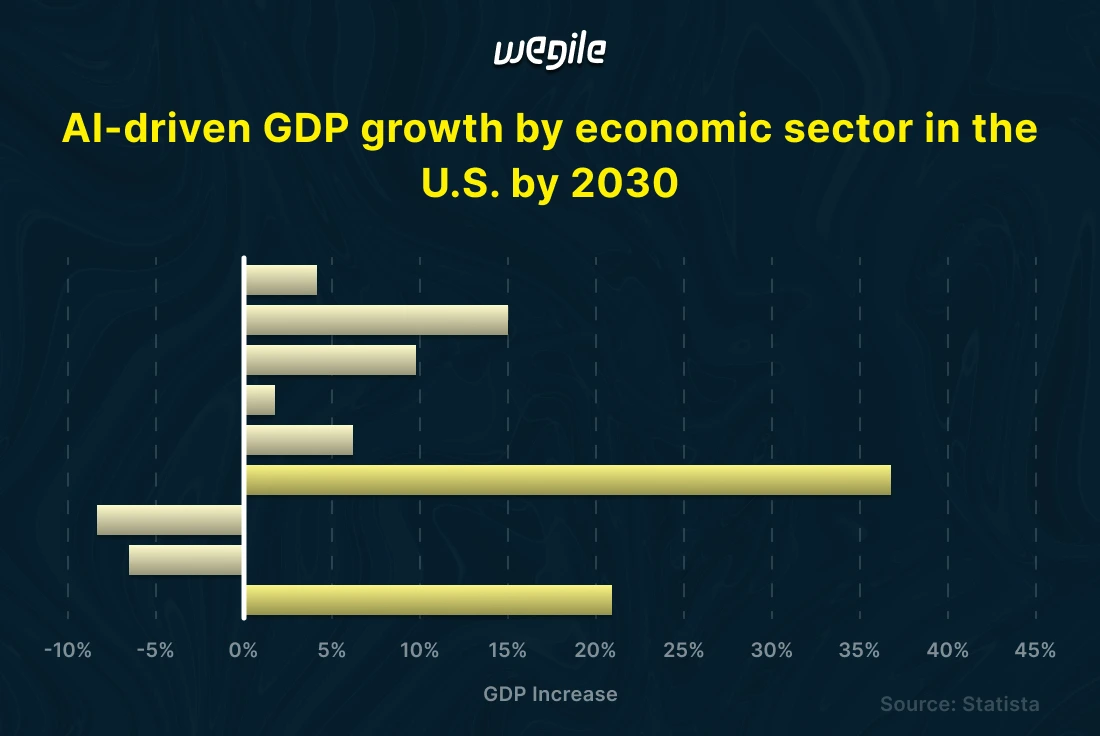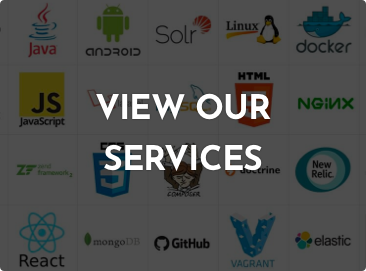AI isn't a sci-fi concept; it is real and is shaking up lives. It has swiftly incorporated into business across America, changing how things work at every level in each domain. But with so much AI discussion, it's easy to feel lost in amazement at what it truly means and how it impacts real businesses. So, how can companies cut through the hype and focus on AI technologies that matter? Is AI worth investing in or merely a trend? These questions have left many CEOs and business owners confused about whether they should adopt it or stay with what they know. This blog guides you through the real-world impact of AI in the US and the technologies that are transforming several industries. We will explore how AI is helping organizations scale smarter, streamline processes, and engage customers in new ways.
From early computational and cognitive research, the US has led the development of AI. Artificial Intelligence as a concept gained momentum in the 1950s when John McCarthy and Marvin Minsky established and formalized ideas around machine learning and intelligence at American colleges. Early U.S. government investment, particularly through DARPA, helped bring AI from theory to practice, laying the framework for future progress. Over the decades, natural language processing and machine learning have helped the U.S. lead the field of AI. Collaboration among research institutes, industry leaders, and government support has made AI central to the nation’s technological progress.
AI's U.S. journey began with strategic government participation. DARPA financed the 1960s "Speech Understanding Research" project, one of the first attempts to teach computers to comprehend human language. AI's fundamental principles were developed by universities like MIT and Stanford. Early achievements were driven by DARPA efforts to improve national security and create autonomous systems that demonstrated AI's potential. This collaboration between government organizations and academics provided access to resources, innovation, and breakthroughs that made the U.S. an international leader in AI development.
Over the years, the United States has set the standard for AI with a number of groundbreaking achievements. IBM's Deep Blue defeated world chess champion Garry Kasparov in 1997, demonstrating machine learning's power. Following this, Google introduced “deep learning” neural networks, which transformed image and speech recognition. Watson won “Jeopardy!” in 2011, exhibiting advancements in natural language processing. Deep learning and generative AI have lately offered even more powerful AI technologies, transforming various sections. This shows the U.S.'s dedication to pioneering AI innovations that have shaped global industry.

AI has grown rapidly in the US for several reasons. Recent advances in computing power and algorithms have made AI applications easily accessible and scalable. A wealth of data from IoT devices, social media, and digital interactions has made AI smarter, turning raw data into useful insights. Cloud computing has further driven AI adoption by providing powerful processing capabilities without the need for heavy infrastructure costs. Also, venture capitalists and IT giants have funded AI research and entrepreneurship, cementing AI's place in the business landscape.
Recent studies show that various American businesses use AI. Following the launch of ChatGPT, 73% of American businesses have used AI in some capacity in 2023, with 54% utilizing GenAI (PWC). Artificial intelligence is anticipated to have a large economic influence, adding 15% to the US GDP by 2030 (Statista). Nearly 65% of organizations use generative AI in sales, customer service, and supply chain, according to McKinsey. As a result of enhanced operational efficiency and customer engagements, revenue has increased by around 5%.
Companies and investors are pouring resources into U.S. AI firms because of their transformative potential. Major firms like Google, Microsoft, and Meta significantly invest in AI-focused businesses, sparking innovation in healthcare and retail. These firms receive significant venture capital funding, making the U.S. AI market the most funded globally. This significant financial backing encourages experimentation and rapid progress, solidifying the U.S.'s position as a leader at the forefront of AI advancement.
The explosion of data generated by Internet of Things (IoT) devices, social media, and online interactions is driving the expansion of AI in the United States. With more data to analyze, AI systems are more accurate and adaptive. AI improves continuously with this vast data flow, enabling predictive analytics, tailored experiences, and automation. The abundance of data in the United States is driving innovative AI applications in fields as diverse as healthcare and finance, creating an ideal setting for businesses to flourish.
Must Read: How to Build Generative AI Apps: A Comprehensive Guide
U.S. sectors are being transformed by AI, improving efficiency, precision, and innovation. Healthcare and retail are using AI to improve procedures and gain smarter insights. Each industry is experiencing transformative benefits, whether it's patient outcomes in healthcare, fraud detection in finance, or tailored shopping experiences in eCommerce. This section discusses these changes and practical AI applications that increase productivity and growth.
AI is improving healthcare diagnostics and treatment with astonishing precision. Predictive algorithms can now detect diseases early, improving cancer and heart disease diagnosis. Radiologists can now conduct faster, more accurate diagnoses with the help of AI-driven imaging tools that detect even the most subtle abnormalities. AI can also help with personalized medicine by tailoring treatment strategies to a patient's specific genetic composition. In addition to patient care, AI helps hospitals manage beds and staff, improving processes and wait times. Thus, AI enables healthcare providers to enhance results and maximize resources, which is good for patients and medical teams.
When it comes to decision-making, customer experience, and data security, the financial sector is AI dependent. AI algorithms help banks to assess risk in real time and make data-driven loan and investment choices. Predictive analytics give clients personalized financial advice, while chatbots and virtual assistants answer common questions. Through pattern analysis, AI alerts banks and customers to suspicious transactions, ensuring security. This proactive fraud prevention protects assets and creates trust in digital financial services, boosting customer loyalty.
E-commerce and retail businesses employ AI to tailor customer experiences and optimize logistics. AI uses browsing history and past purchase data to offer products based on user preferences, increasing sales and engagement. AI also contributes towards elevating supply chain management. It improves inventory, predicts demand, and automates warehouse activities, reducing supply chain inefficiencies. The availability of chatbots and customer care systems powered by AI guarantees a flawless shopping experience at every time. Merchants, with the support of data insights, can improve efficiency, keep inventory under control, and create personalized shopping experiences that keep customers coming back.
The use of AI for predictive analytics and automation in manufacturing has substantial benefits. Early wear detection using AI systems reduces downtime and extends the life of machinery. Another advantage is the streamlining of quality control. This is because AI's flaw detection abilities are far more accurate than those of human inspectors. Supply chain management uses AI to optimize production and delivery schedules for fast logistics. AI integration into manufacturing and supply chains improves operational efficiency, costs, and product quality. This makes AI a valuable asset in attaining a competitive edge.
Must Read: Exploring Top 13 Use Cases for Generative AI
As we conclude our conversation about AI's rise in the U.S., it's clear that businesses are experiencing a tsunami of innovation. From automating activities to improving consumer experiences, AI is here and making a difference. While watching this transition is fascinating, entering the AI world for the first time might be stressful for businesses.
That’s why we’re here to support you! Here at Wegile, we're not merely knowledgeable about AI; it's our daily reality. As a leading generative AI development business, we help you leverage AI's potential by creating tailored solutions that meet your needs. Our experts can design intelligent chatbots, personalized content engines, and AI-driven analytics to transform your ideas into reality.
Ready to see how AI can help your business? Connect with Wegile today, and let's create the future together!


 Browse Our Services
Browse Our Services
